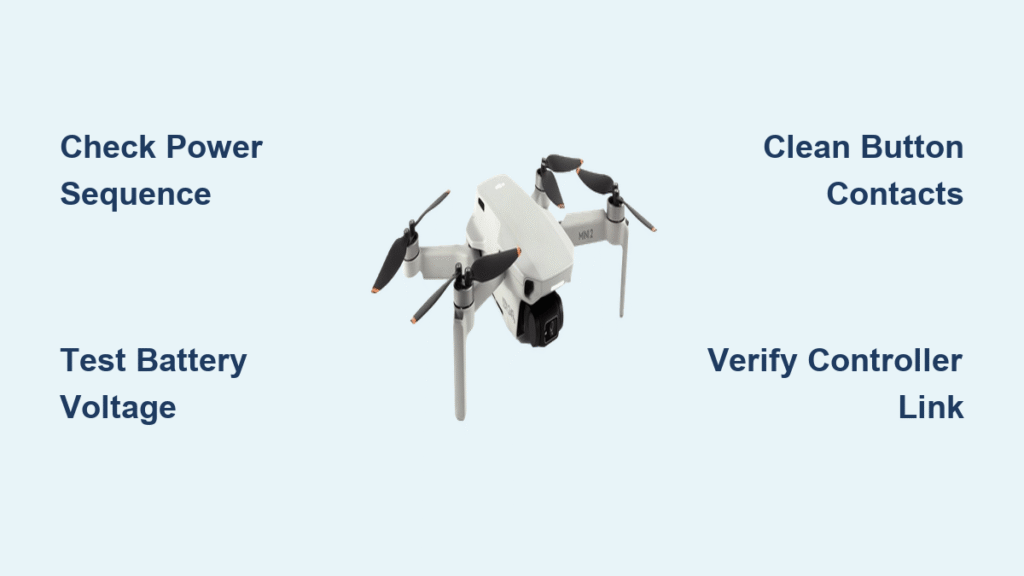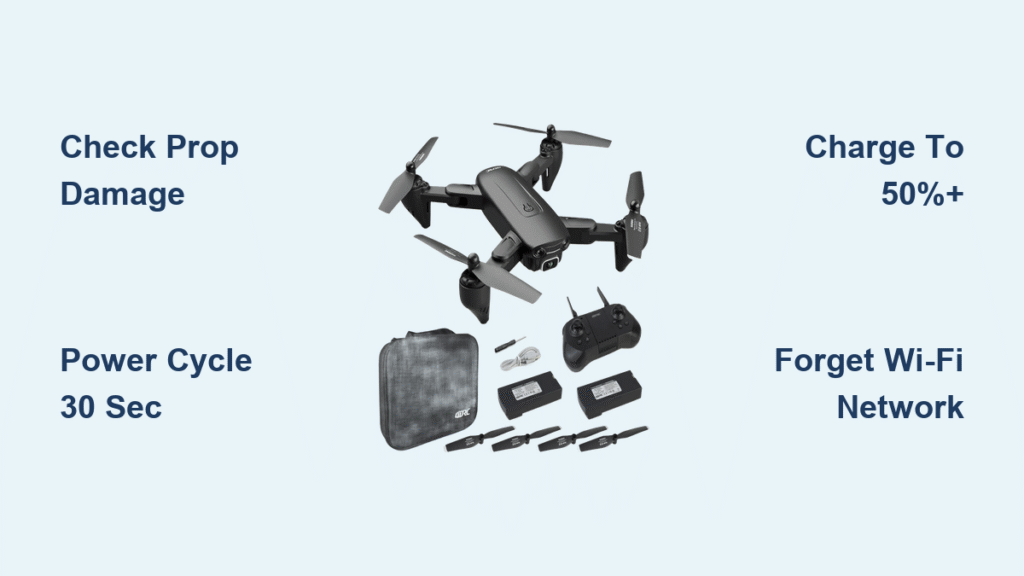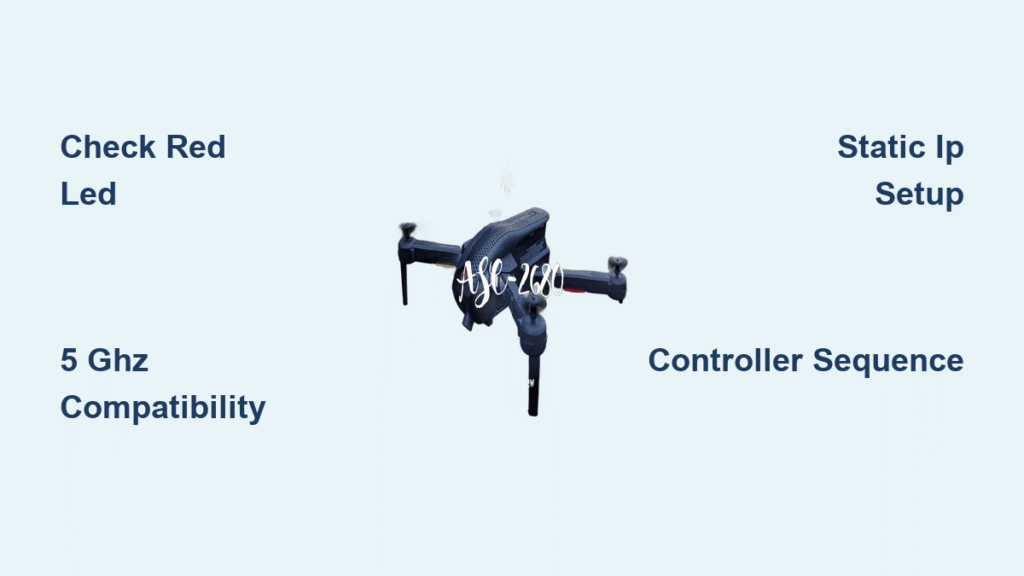Your Tello drone powers on but won’t lift off, drifts uncontrollably during hover, or refuses to connect to your phone—leaving you staring at error messages instead of capturing smooth aerial footage. These compact drones dominate STEM classrooms and hobbyist fleets for good reason, but even reliable Tello units develop frustrating glitches. When your drone suddenly flips on takeoff or displays cryptic LED warnings, you need actionable solutions, not vague advice. This Tello drone troubleshooting guide delivers proven fixes verified across hundreds of classroom drones and personal units, transforming you from frustrated user to confident drone technician in under 30 minutes.
Most Tello failures trace back to three core culprits: battery degradation, environmental mismatches, or sensor obstructions. The good news? Over 80% of issues are solvable without tools or technical skills. By mastering LED diagnostics and understanding Tello’s unique flight constraints, you’ll minimize downtime and maximize flight time. Whether you’re prepping for a robotics competition or troubleshooting a weekend crash, this guide covers every critical failure point with step-by-step repairs.
Decode Tello’s LED Warning Patterns

Tello’s tiny LED is your instant diagnostic tool—ignoring its signals wastes precious flight time. That single light communicates precise failure modes through color sequences, eliminating guesswork when your drone won’t respond. Memorize these patterns to skip unnecessary battery swaps or app reinstalls.
Solid red means immediate battery failure—land now and recharge. But rapid red flashes (4-5 times) indicate a “non-official battery” warning, which often triggers even with genuine Ryze batteries. This isn’t a scam alert—it’s usually fixable by power-cycling the drone: Remove the battery for 10 seconds, then reinsert while watching the LED. If the error persists across multiple batteries, your drone’s main board requires inspection.
Blinking blue and red simultaneously means firmware updates are in progress—never interrupt this process. Wait for solid blue before flying. Pro tip: During startup, count red blinks—three rapid flashes often indicate IMU (inertial measurement unit) calibration failure, while five flashes point to battery contact issues. Addressing these in sequence prevents wasted effort on unrelated fixes.
Fix Tello Battery Not Charging or Powering On
Revive Deep-Discharged Tello Batteries
Left your drone idle for months? Your battery likely suffered irreversible damage. Li-Po cells below 2.75V per cell lose capacity permanently, causing mid-flight shutdowns even after recharging to 4.2V. Don’t waste time troubleshooting—you need a replacement. Prevent this by storing batteries at 60% charge (3.8V per cell) and checking voltage monthly with a $10 Li-Po meter. Retire any battery older than 24 months—they become unreliable regardless of usage.
Repair Weak Charging Contacts
When Tello won’t charge via USB despite using a good cable, weak spring tension on battery contacts is the culprit. Fix this in 90 seconds: Remove the top cover (four Phillips screws), then gently bend each gold contact outward using tweezers. Test by reinserting the battery—it should click firmly into place. For emergency flights, use an external Li-Po charger at 1C rate, balancing to 4.20V ±0.03V. Never force a loose battery; intermittent connections can fry the main board.
Stop Tello Drone from Drifting During Hover

Create Optimal Flight Surfaces
Tello’s vision positioning system fails on plain carpets, dark floors, or glossy tiles—causing dangerous drift. Solve this instantly by placing a patterned mouse pad or bedsheet directly under takeoff points. The drone needs high-contrast textures (like stripes or grids) to “see” its position. Test your setup by hovering 12 inches above the surface; if drift continues, increase room lighting to 300+ lux (use phone light meter apps to verify). Avoid direct sunlight though—it overwhelms downward sensors.
Clean Critical Vision Sensors
Dust on Tello’s belly sensors causes erratic hovering. Power off the drone, then wipe the four downward-facing lenses with a microfiber cloth dampened with 90% isopropyl alcohol. Focus on the circular sensor cluster between the landing gear—this houses the optical flow camera. For stubborn grime, use compressed air at 30 PSI maximum. Never use cotton swabs; fibers can scratch lenses. Re-test hover stability immediately after cleaning—successful fixes show near-perfect stability within seconds.
Prevent Tello Takeoff Flips: Prop and Calibration Fixes
Correct Propeller Installation Errors
Tello flips violently on takeoff 90% of the time due to propeller mistakes. Front props must have “F” markings facing forward; rear props require “B” labels. Crucially, clockwise (CW) and counterclockwise (CCW) blades must alternate positions around the frame—check by matching blade curvature to motor rotation arrows. Tighten all screws firmly; loose props cause vibration that triggers flight aborts. Replace any chipped blades immediately—they imbalance thrust.
Calibrate Center of Gravity After Repairs
After motor replacements or frame impacts, run Tello’s center-of-gravity calibration: Open the app, go to Settings > Calibrate, and slowly rotate the drone horizontally for 10 seconds. This resets flight stabilization. If flipping continues, check for bent motor shafts—hold the drone and spin each prop by hand. Wobble indicates a damaged shaft requiring motor replacement. Never skip this step after hardware repairs; uncalibrated drones become unpredictable hazards.
Solve Tello Wi-Fi Connection Failures (90% Success Rate)
Execute the Airplane Mode Reset Sequence
When Tello won’t connect, follow this exact order—it resolves most issues: 1) Enable Airplane Mode on your device, 2) Force-quit all apps except Tello, 3) Remove the drone’s battery for 10 seconds, 4) Reinsert battery and wait for solid blue LED, 5) Open the Tello app and connect. Skipping any step reduces success rates. Overheated drones also reject connections—let them cool 2-3 minutes if warm to the touch. For persistent failures, perform a master reset by holding the power button for 10 seconds until LEDs extinguish.
Eliminate Multi-Drone Interference
Flying multiple Tellos in one room? Limit to four units to prevent Wi-Fi channel clashes. For classroom settings, use Tello EDU’s router mode to assign separate channels. If control lag occurs during FPV streaming, disable video in coding apps like DroneBlocks—camera data saturates the 2.4GHz band, delaying flight commands. Always update firmware on all drones simultaneously; version mismatches cause erratic behavior in fleets.
Replace Faulty Tello Motors: Step-by-Step Repair Guide
Desolder and Install Motors Safely
For thrust loss in drones older than two years, motor replacement is often needed. You’ll need a 350°C soldering iron, 0.5mm solder, and Phillips screwdriver. First, remove the top cover (four screws plus two under rubber feet). Note motor polarity: CW and CCW units have reversed wiring. Desolder three leads carefully, then press out the old motor. Insert the new 6×15mm coreless motor (salvaged from donor drones or generic replacements), re-solder leads, and secure with cyanoacrylate if loose. Reassemble, then calibrate IMU before flying. This intermediate repair takes 15 minutes but restores full flight capability.
Pre-Flight Checklist: Avoid Common Tello Failures
Never skip these five steps before flying:
– Inspect props for nicks (replace damaged ones immediately)
– Check motor spin-down time—healthy motors coast 2-3 seconds
– Verify 300+ lux lighting using your phone’s light sensor
– Confirm patterned surface under takeoff zone
– Ensure battery at 60%+ charge (3.8V per cell minimum)
Educators managing fleets should maintain one donor drone per ten units for parts, label all batteries with purchase dates, and power on units 15 minutes before class to catch thermal shutdowns. Test-hover each drone to identify drifters early—this prevents student frustration during lessons.
Store Tello Batteries to Prevent Permanent Damage
Improper storage kills Tello batteries faster than flying. Always store at 60% charge (3.8-3.85V per cell), checked monthly with a voltage meter. Never leave batteries fully charged or depleted—both accelerate degradation. Retire any Li-Po battery exceeding 24 months, regardless of cycle count; aged cells deliver unstable voltage causing mid-flight crashes. For long-term storage, place batteries in fireproof containers away from direct sunlight.
Mastering Tello drone troubleshooting transforms frustrating downtime into confident flying sessions. Remember the golden sequence: Check LED patterns first, then verify power connections, inspect props, and assess environmental factors—before diving into complex repairs. Most critical issues resolve with simple contact cleaning, surface adjustments, or recalibration. Keep this guide handy during pre-flight checks, and you’ll maintain near-perfect drone uptime. For persistent problems, always start with the quick diagnostic flowchart: Power on failures point to batteries, takeoff flips reveal prop errors, and hovering drift demands surface fixes. Your Tello’s reliability depends on these small, consistent actions—implement them today and reclaim your flight time.



